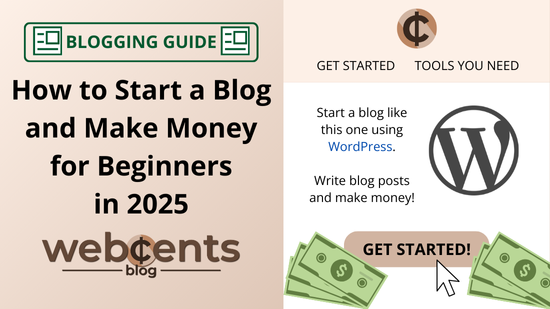Blogging is a great way to make money online as a writer. With a blog, you write articles that provide helpful information on a specific topic. In this guide, I will show you how to start your own blog and make money blogging. Even if you are a complete beginner.
A blog is a website that contains articles you create and update regularly. So, in this guide, you will learn how to start a website. Then, you will learn how to pick a niche, buy hosting, and set up WordPress to manage your blog. You will learn how to write content and get visitors to your blog. Finally, you will learn step by step how to make money with your blog.
Feel free to bookmark this page for reference so you can return to this article easily.
There will be a lot to cover in this blogging guide, so if there is a specific section you’d like to read, you can use the table of contents below. With that said, let’s get started.
Step 1: Pick a Niche
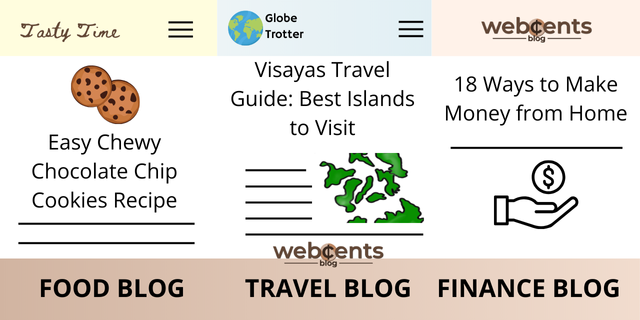
Before starting a blog, you need to know what kind of content you will write.
Many bloggers write about their personal lives like an online diary. However, most people will not be searching for you or your life (unless you’re a celebrity). So, to get people to find your blog, you need to pick a niche with topics they are searching for.
A niche is an area of life, such as food, money, spirituality, fitness, cooking, and travel. The goal is to turn your blog into a place where people can search for topics in your blog’s niche.
Here are some tips to help you pick the right niche for your blog:
- Pick a niche that makes you curious. If you pick a boring niche, it will be easy to give up.
- Pick a niche that makes money. According to a study by RankIQ, blogs that are in the food, finance, lifestyle, and travel niches are the top four types of high-paying blogs.
- Pick only one niche. People may not see you as an authority if you do multiple niches.
Step 2: Name Your Blog
Every blog has a name. This is how your readers will identify your blog. There are two ways you can name your blog:
- You can pick a brand name for your blog that is related to your niche. For example, a blogger named Tim who loves solving tech problems might name his blog “Tim’s Tech Fixes.”
- You can name your blog after yourself. Ryan Robinson, Emily Luxton, and Martha Stewart are examples of self-named blogs.
If you cannot think of a good name for your blog, you can try using an AI-powered website name generator like Namelix.
Step 3: Select a Hosting Plan
Now that you have a niche and a name for your blog, it’s time to start your blog.
The first step is to find a web hosting provider. This is the company that will sell you a web server where you can host your blog on the Internet.
There are many web hosting providers to choose from. I will show you my top recommendation and then give you other options.
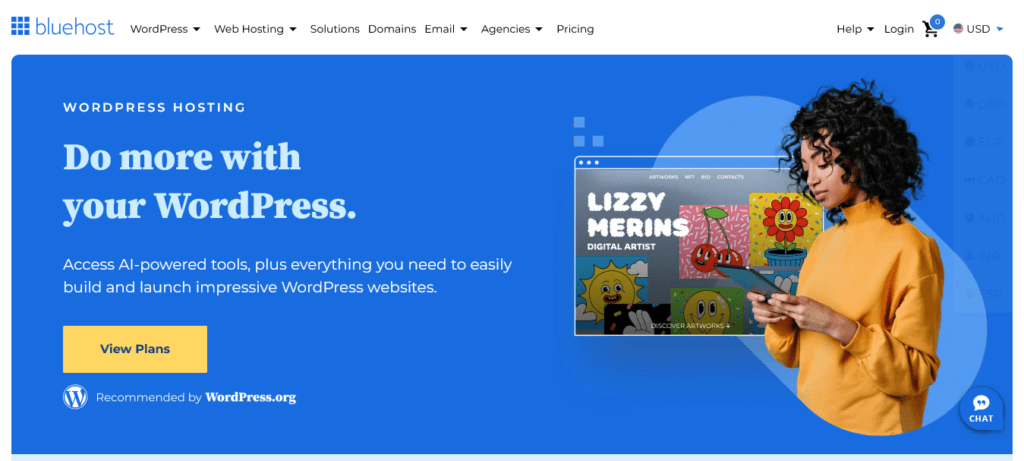
I Recommend Bluehost
Bluehost is a great hosting provider to get started as a beginner. They give you many features for your blog, including easy website setup, priority customer support, a free domain for one year, and free email addresses. It also optimizes your website for WordPress.
To select Bluehost as your hosting provider, follow these steps:
- Visit the link to Bluehost.
- Select “Get Started Now” on the screen that appears.
- Select the button for the Basic plan ($1.99 per month).
- If you see a domain selection screen, move to step 4 below.
Other Hosting Providers
If you would rather pick a different provider, here are a few ideas:
- DreamHost Shared Starter Plan: offers a free domain for 1 year and an excellent help center
- Hostinger Premium Plan: provides fast website loading times, 100 GB storage, a free domain for 1 year, and free email addresses
- AccuWeb Hosting WordPress Basic ++ Plan: gives you WordPress optimization, free email addresses, website backups, and priority support
- A2 Hosting Ignite Plan: offers a free domain for 1 year, free email addresses, website backups, and priority support
Remember to find the basic plan (name shown above) on their website and select it. If you see a domain selection screen, move to step 4 below.
Step 4: Pick a Domain Name
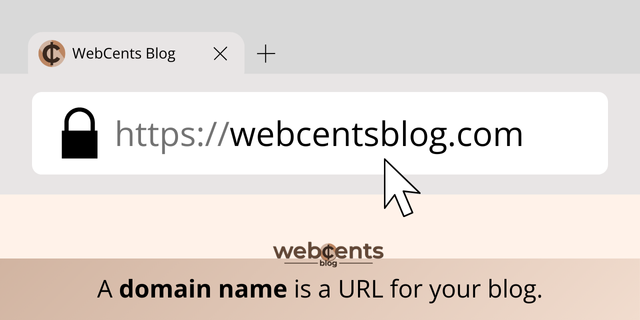
Next, you need a domain name. This is the URL (web address) that people will type into their browser to get to your blog.
Once you select a plan, you should see a domain selection screen. Follow these steps:
- Take your blog’s name (from step 2) and see if it’s available as a “.com” domain. Most successful blogs have a “.com” domain.
- If your blog’s name plus “.com” is not available, try to change your blog’s name a little bit to make the “.com” domain work.
- If you’re running out of name ideas, try an alternative to “.com,” such as “.net” or “.blog.” Avoid country-code domains like “.co.uk” or “.ca”.
Step 5: Pay for Your Domain and Hosting
Next, process your payment to your hosting provider:
- Select a domain name for your blog.
- Understand the pricing plan. If your plan comes with a free domain for one year, you will need to pay for it annually after your first year.
- If your provider tries to sell you add-ons, I suggest buying Domain Privacy Protection (or ID Protection) to keep your domain information private. You do not need any other add-on.
- Enter your personal and payment information and submit.
You should see a receipt in your email. You should also have an account with your hosting provider. To manage your website, just log in to your hosting account.
Step 6: Set Up Your Blog
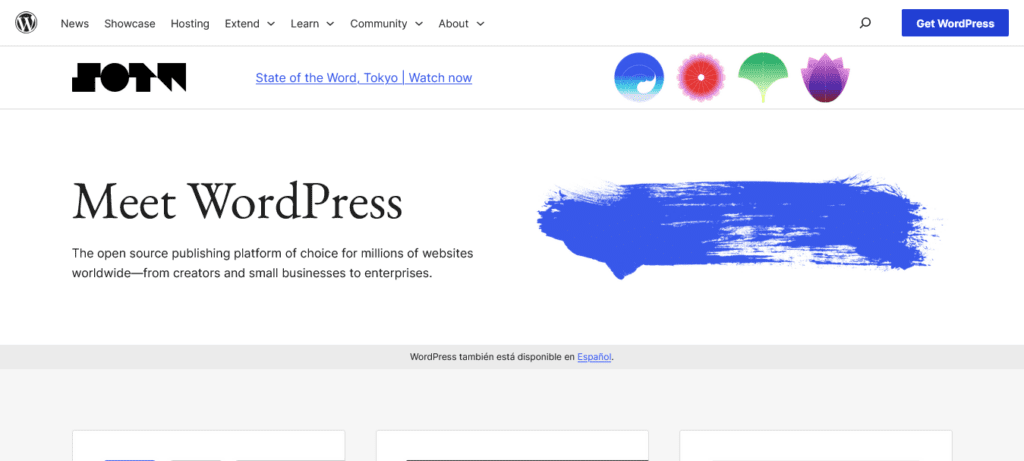
You can now set up your blog. To do this, I recommend using WordPress for blogging. 43% of websites are using WordPress because it’s easy to use, it has many features, and you don’t need to learn how to code.
There are other WordPress alternatives, such as Joomla, Drupal, and Squarespace. However, these programs are not really designed for blogging.
How to Set Up WordPress
Most hosting providers give you the option to install WordPress. Some may have WordPress already installed for you. If you’re not sure, check your hosting provider’s help center.
Once you install WordPress, your dashboard should look something like this.
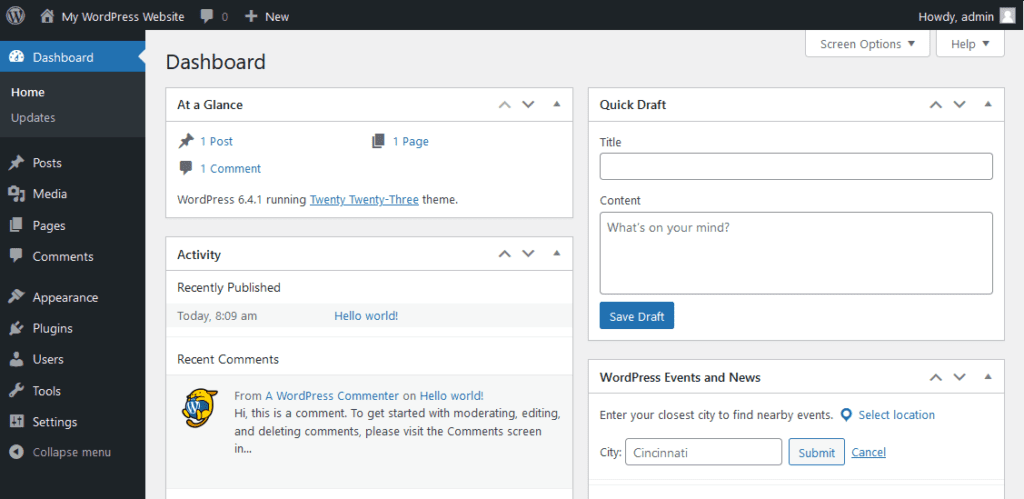
You can access your WordPress dashboard at any time by typing in your domain name and adding “/wp-admin“. So, if your domain is example.com, the link to your WordPress is example.com/wp-admin.
How to Customize with WordPress
WordPress offers many features for your blog, such as themes, plugins, and a customizer.
- A theme is a design for your blog.
- A plugin is a WordPress extension that gives you additional settings and features for your blog and for your WordPress, like a spam blocker, backup, social sharing buttons, and more.
- The Customizer lets you change your blog’s colors, fonts, and menus.
Follow these steps to explore these features and set up your blog:
- Go to
Appearance > Themesto see the theme currently on your blog. Click “Add New Theme” to search for a new theme. - Go to
Appearance > Pluginsto see your plugins and search for new ones to install. - Go to
Appearance > Customizeto see the Customizer. Feel free to experiment with the settings, then click “Publish” once you’re satisfied.
If you want to learn more about navigating WordPress, check out WPBeginner. They have all sorts of tutorials and help articles related to WordPress.
Step 7: Learn How to Write
At this point, your blog should be designed the way you like it. Now, let’s learn how to write.
Posts vs Pages
WordPress makes a difference between posts and pages. On the left of the dashboard, you’ll see a link for “Posts” and a link for “Pages.”
- A post is an article for your blog. Blog posts are created and updated regularly.
- A page on your blog is static. Unlike posts, they do not need regular updates. They provide info about your blog, like an about page and a privacy policy.
Practice Editing a Page
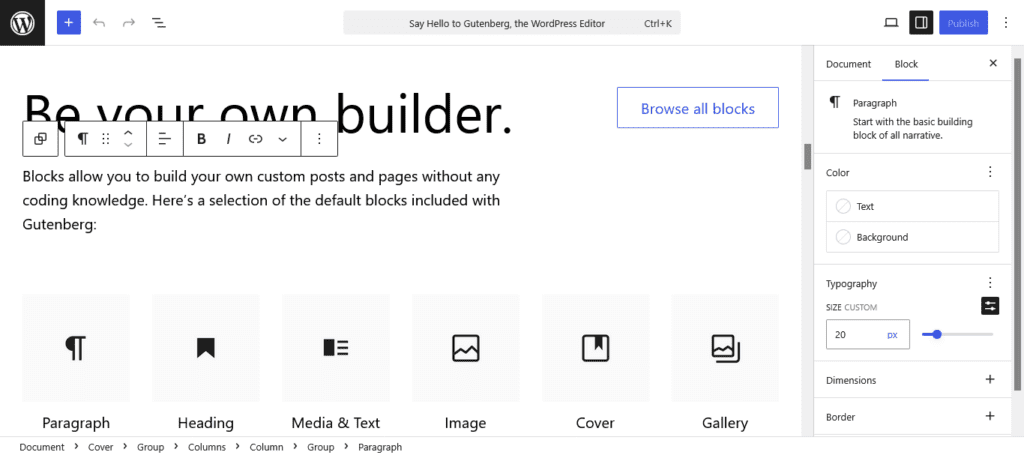
Now, you’re ready to practice writing. Follow these steps:
- Go to “Pages” or “Posts” on the left side of your WordPress.
- You’ll see an example page. Click on it to see the WordPress editor.
- In the editor, you can see the blocks that make up the page, like paragraphs, images, and lists.
- To add a block, go to a new line and type “/” to see a few block ideas.
- You can also click the “+” icon at the top-left to see all the blocks available.
- You can edit the example page using the blocks in the editor.
Step 8: Write Posts for Your Blog with AI
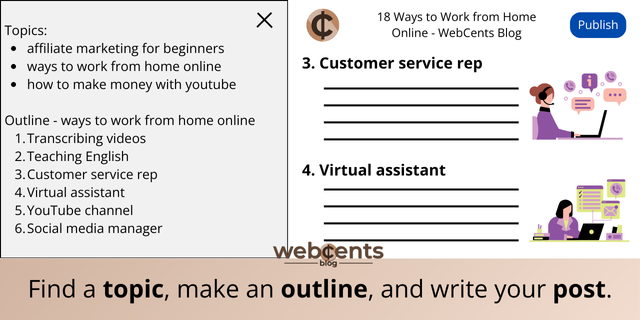
Your blog is now ready for some posts that provide information to your visitors. But, before you start writing, you should plan out each blog post. That way, you can avoid burnout and stay productive.
Plan a Blog Post with AI
With AI readily available, it’s so easy to plan your blog post. You can use ChatGPT and ask it for topics to write about in your niche.
For example, when I asked ChatGPT about topics in the blogging niche, here are some of the topics it gave me:
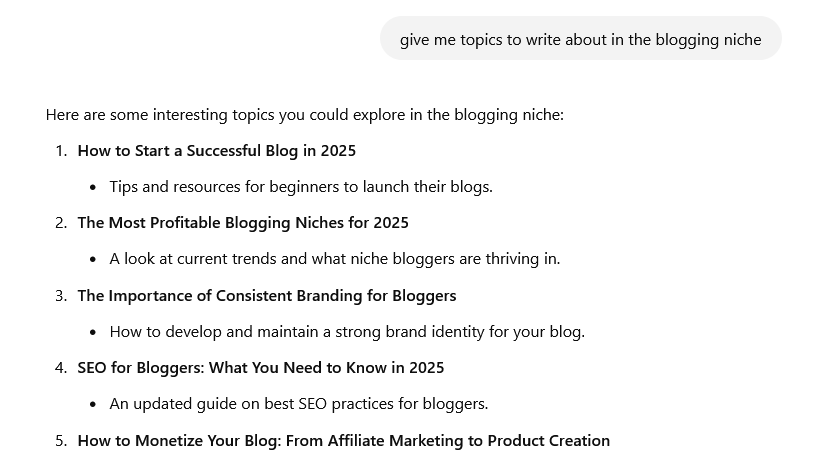
Once you have some topic ideas to write about, follow these steps:
- Using an app or a piece of paper, create a note and write down your topic ideas.
- Pick one of these topic ideas to write about.
- Do some research on the topic you picked.
- Create another note and write down the name of your topic.
- Write an outline of how your post will be structured.
You may need to get in the habit of doing this. That’s OK. Just keep following these steps for every post you write and eventually, you’ll get the hang of it.
If you use AI to help you research your topics, make sure you are getting accurate information by double-checking with a few websites on Google. After all, even ChatGPT’s website admits that it can make mistakes!
Write a Blog Post with AI
It’s time to write! Go to Posts > Add New Post to create a post in your WordPress editor.
Again, AI makes it easy to help you write blog posts quickly. However, ChatGPT is not the best AI tool for blog writing. Instead, I recommend ParagraphGenerator.io.
Follow these steps to write your blog post with ParagraphGenerator.io:
- On the website, select your preferred tone of voice at the top.
- In the text box, enter a subtopic from your outline to write about. If you’re writing an introduction or conclusion for your post, enter “introduction to…” or “conclusion to…” followed by your blog post topic.
- On the bottom, select the number of paragraphs you want and choose whether you want concise (short) or detailed paragraphs.
- Click “Generate.” If needed, click the verification checkbox. The AI-generated writing will appear.
- Copy and paste the writing to your WordPress editor.
- Repeat steps 2-5 for every subtopic on your outline.
- Edit the writing to correct any errors and add your own voice.
- Use Paragraph Rewriter to rewrite your paragraph if it looks poorly written.
Optimize Your Blog Post
Here are some more tips to help you optimize your blog post:
- Stay on topic. Don’t talk about anything else unless it supports the topic.
- Add visuals like photos, infographics, and a video to help visualize what you’re trying to say.
- Link to other websites for your visitors to read. You can also add links to other posts on your blog. However, do not add a link if it doesn’t make sense in your content.
- Proofread your work. Check for spelling, capitalization, and punctuation typos.
- Verify what you wrote. Skim through your post and see if it makes sense to you.
- Click “Save Draft” to save what you wrote and finish your page later.
- Click “Publish” to put your page live on your website for everyone to see.
For more advice on how to write a good blog post, check out this article by Smart Blogger.
Rinse and Repeat
Once you’ve published your blog post, rinse and repeat! Go back to the beginning of step 9 and pick another topic for your next blog post.
Keep publishing blog posts regularly. As long as you have a blog, writing blog posts should become a part of your life. Don’t worry: over time, it will become second nature.
Step 9: Write Pages for Your Blog
You can start by writing a page for your blog if you want. This way, you can provide information about your blog before writing your posts. Otherwise, you can skip to the next step (step 9).
I recommend writing your pages yourself (without AI). After all, you need to describe who you are and what your blog is about in your own words.
Here are some examples of pages that are used on blogs:
- About Me/Us page: describes who you are and/or what your blog is about
- Privacy Policy page: explains how you handle data you collect from visitors
- Terms of Service page: explains your rules and legal matters that visitors must agree to
- Contact page: a place where people can send you their questions
Go to Pages > Add New Page to create a page. Use the blocks to help you put your page together.
- Click “Save Draft” to save what you wrote and finish your page later.
- Click “Publish” to put your page live on your website for everyone to see.
Step 10: Get Traffic to Your Blog
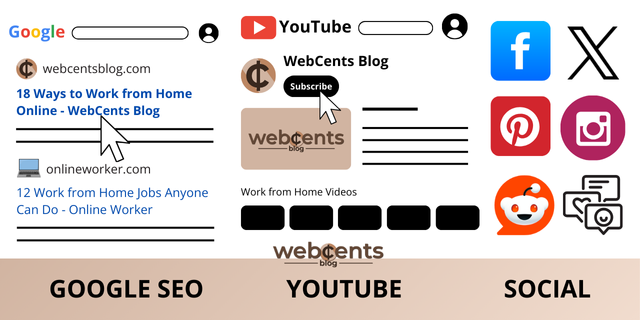
Now you have a blog with some content. If you’re ready to see visitors reading your blog, there are three easy ways to get free traffic:
- Search engine optimization
- A YouTube channel
- Social media and forum accounts
Let’s break down each of these methods.
Search engine optimization
Search engine optimization, or SEO for short, is the process of optimizing your blog to be visible for keywords on search engines, including Google. SEO involves things like finding blog post topics based on popular keywords, producing high-quality content, and improving the security and loading speed of your website.
- Check out the Yoast blog to learn how SEO works and how to get started.
- Download the Yoast plugin for WordPress to help you with your SEO as you write.
A YouTube channel
Most likely, you know about YouTube and use it on a regular basis. Millions of people like you are also using YouTube, so it’s a great place to get traffic.
- Post your blog content as videos on your YouTube channel.
- Redirect your YouTube viewers to your blog for more information.
- Encourage viewers to like, subscribe, and share your content.
- Learn how to make money on YouTube for another source of income.
Social media and forum accounts
Many people are also on social media platforms like Facebook, X, Instagram, Pinterest, and TikTok, as well as forum sites like Reddit and Quora. You can get readers from those places too.
- Pick one social media platform and create an account for your blog.
- Post content once in a while on your social page. If you’re on Facebook, write a full post. If you’re on Pinterest, create a pin. If you’re on TikTok, film a short video.
- If you’re on a forum site, answer a question that relates to a topic on your blog. Redirect people on the forum to your blog to get more information.
- Encourage followers on your social media account to share your content.
Ways to Make Money with Your Blog

At this point, your blog should be ready to make some money! In this section, I’ll go over the most popular ways to monetize a blog.
RankIQ did a blogging study in 2021. The study found that the most popular ways to make money with a blog are these four methods:
- Running ads: showing ads on your blog
- Affiliate marketing: advertising other people’s products on your blog
- Selling courses
- Sponsored posts: writing for another website
Do not try to do all these methods at once. Just pick one of these methods to get started with. If one method doesn’t work for you, you can skip it and try a different method.
Once you pick a method, find the section for it below.
Method 1: How to Make Money Running Ads on Your Blog
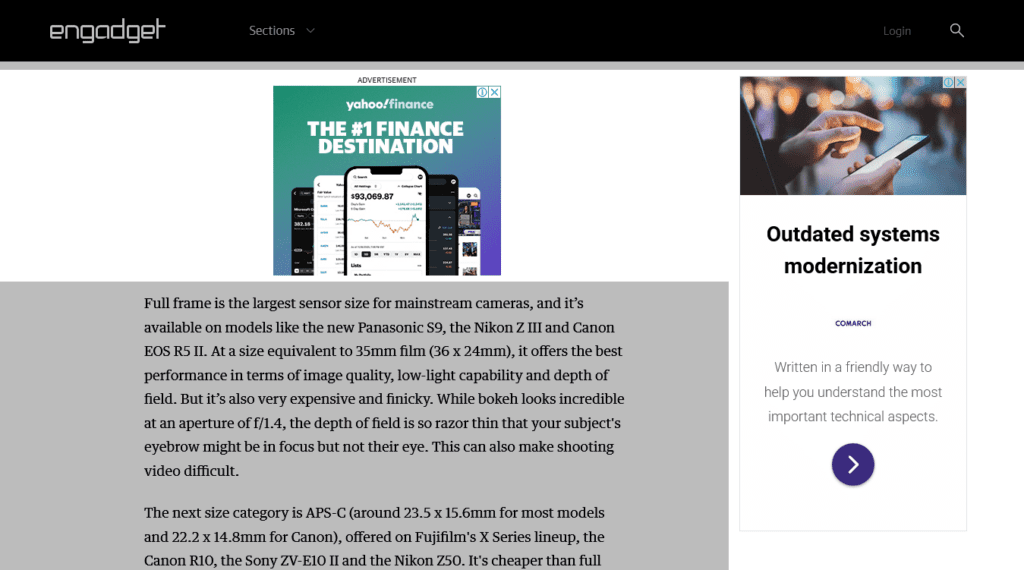
One way to make money with your blog is by running ads. An ad network shows ads on your blog. When a reader interacts with one of these ads, the network pays you a small commission. And, if you have a lot of traffic, the small commissions can add up!
You’re probably familiar with those banner ads and pop-up ads that appear when you’re browsing a website. That’s exactly what you’ll be showing on your blog when you start running ads.
List of Ad Networks to Make Money with a Blog in 2025
Before we get to the list, keep these two things in mind:
- Follow the network’s publisher guidelines. After picking a network, visit their help center and read their publisher guidelines to make sure your blog complies.
- Some ad networks have traffic requirements. This means that your blog needs to have a certain amount of high-quality traffic to be eligible for ads. If you’re a beginner, pick a network that has no traffic requirements.
- Write a privacy policy if you haven’t already. To comply with international data protection laws, it’s important to disclose to your readers the data that will be processed when they interact with your ads. You can learn how to write a privacy policy here.
Here are some popular ad networks you can choose from.
| Ad network | Description | Traffic requirements |
|---|---|---|
| Google AdSense | Google’s ad network; most popular choice | None |
| Adsterra | Professional ad network with high payout rates | None |
| Ezoic | Google-certified network using data-driven technologies | None |
| Monetag | Network with several ad formats and payout methods | None |
| Mediavine | Ad network for professional content creators | 50K visits per month |
| Raptive | Lifestyle-oriented ad network | 100K visits per month, mostly from US, UK, Canada, New Zealand, and/or Australia |
| NitroPay | Tech-oriented ad network | 100K visits per month, mostly from Western markets |
How to Start Running Ads on Your Blog
Follow these steps to start running ads:
- Pick one ad network from the list.
- Sign up for the ad network.
- Add your website to the ad network.
- Wait for approval from your ad network.
- Once approved, find your unique tracking code.
- Copy and paste this tracking code into your blog’s HTML.
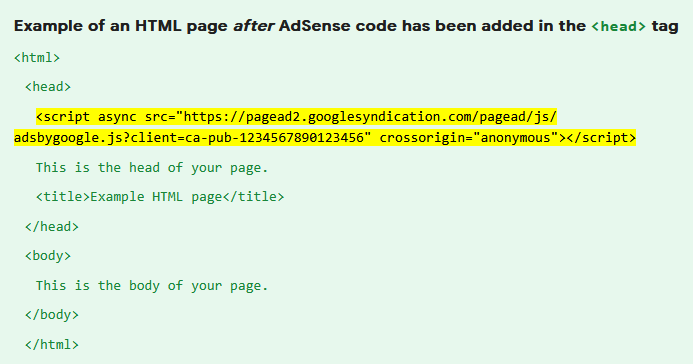
To paste your tracking code using WordPress, follow these steps:
- Select your tracking code and copy it.
- Go to
Appearance > Theme File Editor. - Under Theme Files, find your theme’s header file (header.php) and click on it.
- Find the
<head>tag. Just below it, make a new line and paste your code. - Click Update File to save your changes.
If you’re still having problems, consult your ad network’s help center. Chances are they’ll have an article showing you how to paste your tracking code.
If you signed up for Google AdSense, you can install the Google Site Kit plugin for WordPress, which can automatically paste the AdSense tracking code for you!
How to Track Your Earnings
To see how much money you make with your ads, log in to your account with your ad network. They will give you metrics like these:
- Impressions: how many readers saw your ads
- Clicks: how many readers clicked on your ads
- RPM (revenue per mille): how much money you made for every 1,000 views
- CPC (cost per click): how much money you made for every ad click
- CTR (click-through rate): percentage of your readers that clicked on an ad
Note that running ads requires some patience and a lot of traffic. If you haven’t already, visit Step 10 of this guide to learn how to boost your blog’s traffic.
Method 2: How to Make Money with Your Blog Using Affiliate Marketing
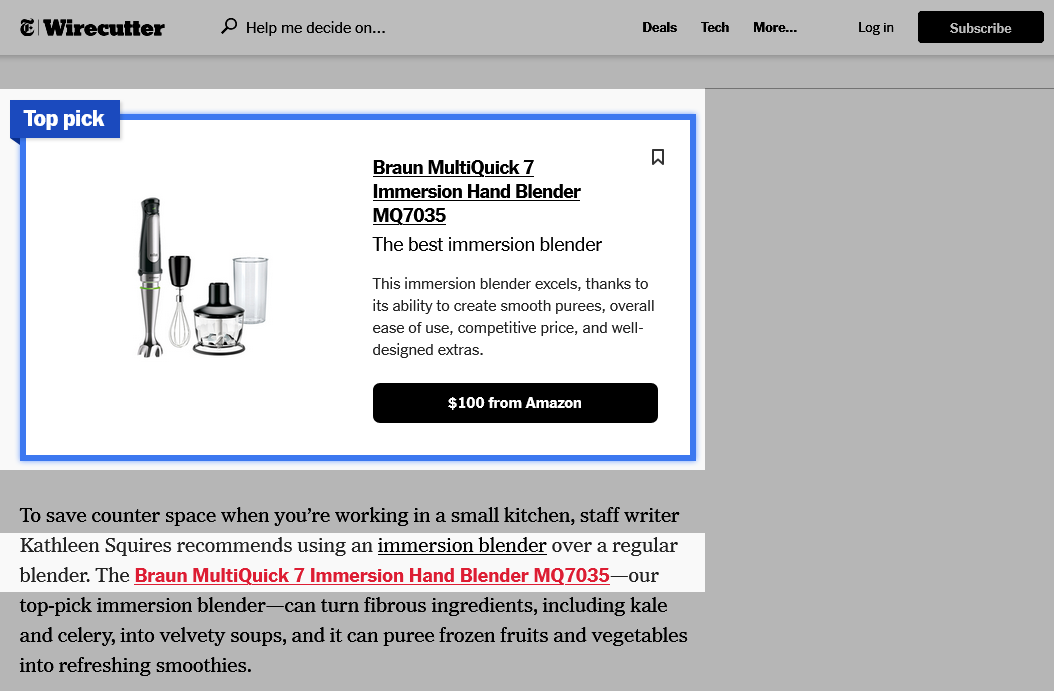
Affiliate marketing is basically advertising other people’s products on your content. When someone clicks your affiliate link and signs up or buys the product, you earn a fraction of the sale.
There are a few benefits to doing affiliate marketing on your blog:
- You don’t need to own the products. You pick products from others to advertise.
- You don’t need to do customer support. If people have questions, refer them to the seller.
- You don’t need to do a lot of marketing. The seller will take care of some of that for you.
- You can scale your earnings. If you want to make more money, just pick more higher-paying products to advertise.
How to Sign Up as an Affiliate
To start doing affiliate marketing, you need to pick a brand or product to be an affiliate for. Many big brands like Amazon, Weight Watchers, and Newegg have pages where you can sign up as an affiliate.
Another way to find brands and products to advertise is by signing up for affiliate networks. Here is a list of some good affiliate networks:
| Network name | Description |
|---|---|
| Impact Radius | A network used by many big lifestyle and fashion brands worldwide |
| ClickBank | A network that has connected sellers with affiliates online for over 20 years |
| ShareASale (transitioning to “Awin”) | A network that has been supporting big brands with affiliates for over 25 years |
| CJ Affiliate | A network focused on selling low-ticket digital affiliate offers |
| JVZoo | A network focused on selling low-ticket digital affiliate offers |
How to Do Affiliate Marketing on Your Blog
Once you’ve found a product or brand to become an affiliate for, follow these steps:
- Sign up on the product or brand’s affiliate page (or through your affiliate network).
- Find your affiliate link. To make it easier, you can save it as a text file.
- Write a blog post, or pick a blog post, on a topic that relates to the product.
- Show your readers your product and how it can help them along the topic.
- Paste your affiliate link as a call to action. Use a button if possible.
- Publish your post. You can sign in to your affiliate account to track your earnings.
- Find other posts to advertise your product, or find a different product, and repeat these steps.
To learn more about affiliate marketing, see my complete affiliate marketing guide. It will help you better understand how to successfully make money as an affiliate.
Method 3: How to Make Money Selling Online Courses on Your Blog
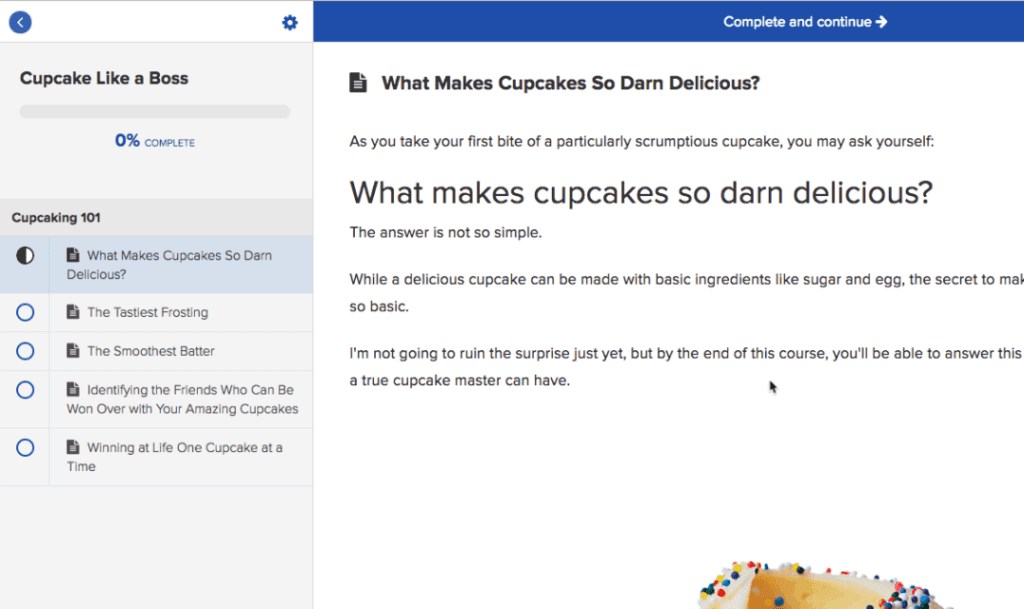
An online course is a set of teaching lessons that cover different aspects of a large topic. This is a great way to sell some of the knowledge you have in your blog’s niche.
There are two ways to sell an online course:
- As a beginner, you can upload videos to an online course directory like Udemy and Skillshare.
- Or you can create a website for your online course on a service like Teachable or Thinkific.
How to Create an Online Course
Follow these steps to create your online course.
- Pick a broad topic in your niche.
- On an app or piece of paper, make a list of all the different aspects of that topic.
- Do some research on each aspect of your topic.
- Write some text and/or record some videos where you explain that aspect.
- Include this content in your course. Each aspect of your topic will act as a lesson (or chapter).
- If you’re able to, add some quizzes, exams, and study aids, to add value to your course.
- Publish your course and start selling.
Method 4: How to Make Money by Writing Sponsored Posts
Sponsored posts are blog posts that you write on behalf of another brand or influencer (also known as the “sponsor”) to help support their work. This can be a great way for the sponsor to get customers and for you to make some money.
You can check out this Brandpoint article for some examples of sponsored posts.
How to Start Writing Sponsored Posts
Here are the steps to start writing sponsored posts:
- Select a brand or influencer in your blog’s niche.
- Go to their contact page or search for their email.
- Let them know that you would be interested in writing a post for them on your blog. Explain to them how your blog post can improve their work and their audience.
- Wait for a reply and reach an agreement on how much they will pay you and what the topic of your blog post should be.
- Write the sponsored blog post and publish it on your blog.
- Share your sponsored post with your brand to let them know it’s there.
Blog Income Reports
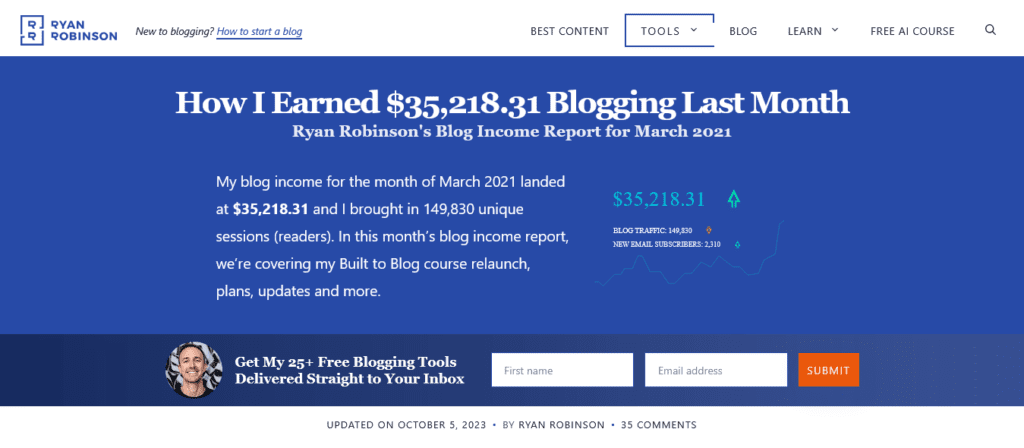
To give you an idea of how much you could earn from your blog, check out these income reports from other successful bloggers.
Earnings disclaimer: There is NO guarantee that you will make this much money with your blog. The amount of money you make will depend on the amount of hard work and investment you put into your blog. These reports are to show that it’s possible, but not guaranteed.
| Blog Name | Niche | Income Earned | Date earned |
|---|---|---|---|
| Making Sense of Cents | Personal Finance | Over $159,000 | November 2018 |
| Create and Go | Blogging | Almost $400,000 | All of 2022 |
| Cassie Scroggins | Mom Blog | $10,000 | January 2023 |
| Get on My Plate | Recipes | Almost $25,000 | July-September 2022 |
| Ryan Robinson | Online Business | $35,000 | March 2021 |
Scott Max also has a list of 100 popular blog income reports.
Blogging for Beginners FAQs
Here are a few questions you might be asking about blogging to make money as a beginner.
You should be blogging as often as you can. Your readers count on you to provide the best up-to-date information about your topic. I recommend publishing at least once a month, but ideally once a week.
It depends on what you’re writing about. The bigger the topic, the more words you need. As a guideline, this study showed that the best blog articles ranking on Google had at least 2,500 words on average.
No, I do not recommend using a free blogging service to blog. These services are not reliable and make you look unprofessional. Plus, you will be using a subdomain of the free service instead of your own domain (web-cents.blogspot.com instead of webcentsblog.com).
Conclusion
And that’s it for my complete guide on how to start a blog and make money as a beginner. Here’s a summary of what you learned:
- A niche is an area of life that your blog is focused on.
- You know how to sign up for hosting and a domain name.
- Using WordPress makes it easy to customize your blog.
- Researching topics and planning your blog posts can help you.
- Three ways to get blog traffic are SEO, YouTube, and socials.
- Four popular ways to make money with your blog are: running ads, affiliate marketing, online courses, and sponsored posts.
Hopefully, you now have a better idea of how to start a blog, how to create blog content, and most importantly, how to make money with your blog. If you enjoy writing, this is the best way for you to make money online, so I hope you enjoy the blogging experience just as I do.
Further Reading
To wrap up, here are some resources to help you improve your blogging skills:
- Yoast SEO Academy: this is the best way to learn how to write blog articles that show up on Google. Yoast SEO Academy is mostly free, with just a few paid courses.
- WPBeginner: this website has a lot of useful information about using WordPress.
- Google Search Central: this website run by Google gives you up-to-date information about how to make your website appear well in the Google search engine.
- Smart Blogger: since 2012, this site has been providing great blogging tips.
Thanks for reading and happy earning!

